Introduction
The theme task of this research paper has selected to identify the effects of sports stadium on participating team as well as adjacent social context, which turn our attention to pay on understanding some specific issues and making further discussion over that. A sports stadium is a place or location where various outdoor sporting events take place.
A structural framework giving a scope to the spectators to sit or stand in order to enjoy that sporting event generally encloses such venue. Rungnado May Day, Salt Lake, Estadio Azteca, Michigan, Beaver, Jornalista Mario Filho, Ohio, Neyland, National Stadium Bukit Jalil, and Melbourne Cricket Ground etc. are some famous sports stadium in the world, which along with other local ones has a major contribution on sporting performance of a team in terms of inherent features and amenities.
Situational Analysis
As mentioned previously, this research topic is focusing on some integral issues regarding the economic and non- economic factors of stadium, which are precisely concerned with historical background at both global and national level, general impacts within the adjacent locations, scopes, and positions of generating revenues from different commercial playgrounds in the world. Some others are situations of utilizing stadiums for the core and other issues, discussion on one of the most popular form of stadiums in terms of multiple usages, system orientation for building a newer one, naming philosophy, and branding overview etc.
Development of a completely new and renovated stadiums, necessary funding, community achievement, contrasting discussion between USA and European stadiums with suggestive approaches, competitive situation and the impact of branding of a team over the organization are similarly contributive in this regard (top10land.com).
As like as sports, stadium also occupies a longer history and development phases from the early 776 BC to till now. However, stadium is the modified version of a Greek world “stadion” which was used to express measuring length. Thus, the world’s most ancient stadium has known as Olympia, which is in western Peloponnesus, Greece. This stadium has closely related with the history of Olympic Games. So far, various sports stadiums has established in different traditional cities in Rome and Greece while the Stadium of Domitian is being recognized as most famous among all of those.
White City, Stanford, Centennial Olympic, Mile High, Miami Orange Bowl, Soldier Field, Waverley Park, River front, Arsenal, Colt, Maple Leaf Garden, Vetch Field are some of the historical global stadiums which are mostly established in London, Atlanta, Denver, Lisbon, Miami, Chicago, Baltimore, Barcelona, Houston, Bern, Bolton, Cardiff, Zurich, Derby etc. cities (World Stadiums 2009). Like the enriched global historical achievement of sporting grounds, USA also occupies a number of excellent stadiums, which has recently backed by reasonable level of government subsidies. In this line, 46 stadiums have been established or restructured during 1990 to 1998 while at the ending of previous century 49 extra sports infrastructures had planned to be developed.
A major portion of $21.7 billion had paid for such development. Today, the different integrated regions of the country has numerous stadiums for accomplishing several sporting events including American and general football, Baseball, Cricket, Rugby, Hurling and Gaelic football etc. Besides that, stadiums at some college and university campuses are also popular and contributive for community and tournament impact, for example Cameron Indoor Stadium, Chicago Bulls of the NBA etc. (Johnson, Groothuis, & Whitehead 2001).
Since sports stadiums have considered as major part of public expenditure, the establishment, and continuous development of such infrastructure is a controversial topic in many places. However, it can understood by observing the practical scenario that a new sports stadium can act as a catalyst for developing the overall lifestyle context of the society by performing many value additional tasks of residential properties. Such valuation incorporates price of lands, local housing and accommodation, transaction and other living costs.
Even an announcement of establishing such infrastructure can increase value. Tourism is another factor, which is automatically motivated through an existence of a branded stadium within a locality. Direct influences involve tourist expenditure on meals, hotel suits, shopping, tickets, merchandising costs and so one. However, an extensive development of stadiums would not be effective since most of them require larger parking, souvenir, restaurants, and similar types of concession benefits, which would lessen total profit margin for the associating community. For both kinds of circumstances, a limited and reasonable number of stadiums are helpful for actual positive turnover of a society. (Dehring, Depken & Ward, 2006). Because of huge national and international sporting fans and supporters, a massive amount of money has invested for this, which is also liable for keeping the sporting teams in competitive pressure with other zones.
Thereafter, it can suggest that, such types of investment should make in economically backward areas so that those would come back from their related financial sufferings. On the other hand, many research studies have also proven that the professional sports climate poses little or no impact on the positive growth factor of per capita earning of people. It would also reduce that earning periodically by substituting other major sectors of public spending regarding health and medical, safety, education, substituting private expenses considering outsider dinner, bowling and movies, compensative disparities in earning and harmful influences on productivity of manual workers etc. (Coates & Humphreys, 2006).
Apart from economic issues, from social viewpoint, the activities of stadiums are sharply controversial in terms of being liable for sourcing noise. Because of using loudspeaker and arranging huge crowd, sound pollution occurs which is badly effective and disturbing the surrounding educational institutes and homesteads (McAuliffe and Kinsella, 2009).
Revenue is another factor that takes a major focus in analyzing an overall impact of stadium while it is effective in revenue generation through many ways. At the middle of previous century, about 50% of all significant team sports had resulted from presence of deep integration and concession. Stadium is another factor, which generally makes earnings through entrance fees regarding many forms of seating, concessions, and promotional tools. Although attendance is highly influential here, an astronomical increase in hockey ticket price of 268% does not pose that level of attentive significance (Dehring, Depken & Ward 2006).
Along with using stadiums for a unique sporting event like- specialized cricket, football, volleyball and so one, there are a number of stadiums, which can used for playing more than one kind of sports. Some of those had primarily built for single purpose but renovated later for accommodating multiple sports. Running through the initialization period between 1960 and 1970 to 1980, North America had experienced that renovation in terms of associating Major Baseball and Football League.
At present, AT and T Park at San Francisco, Tropicana Field at Petersburg and Chase Field at Phoenix are using for multiple playing purpose. Naming of a stadium is another factor which also incorporates a number legislations and formalities from past to still now. Thus, the year of 1946 is being significant for as many baseball stadiums bore the group owner names that were responsible for construction. The primitive dealing of if naming rights had been started from 1990 while up to 2001, there were a greater change in that procedure through the adoption of organizational names. Modern stadiums are not only sourcing gaming arrangement but also generating a lot of innovative customized services and applications for facilitating all the related parties of employees, guests, press, media, team organizers etc. For ensuring other usages more than sporting, communication needs to improve in terms of technological and non- technical issues.
Therefore, integrated stadiums will combine the facilities of residential, retailing, commercial, and entertainment with increased seating opportunities outside of luxury boxes as well as floor seating (Nortel 2009). The seating license or PSL is generally formatted by stadium authority in most of the cases which can be advanced only for certain conditions regarding ownership for cost relocation, design and construction expenditures, switching of assets, transportation costs, workforce severance and replacement costs etc. (Esquire 2002).
However, in a world of sporting excitement, multi- visional stadiums can also affect the virtual performance of competing teams in relation with brand name, attention of sponsorship, integrated physical amenities, seating capability and so one. By following the chain of value generation, those performing sporting groups act as source of extreme entertainment, mutual co- operation, domestic employment, external flows of money for local community in return (Mary 2009).
History of Stadiums around the World
Stadium is a place or establishment where different types of events such as sports, seminars, concerts and any other sort of events are organized. These events can be both indoor and outdoor. In indoor stadiums, different types of events like gymnastics, table tennis, chess, badminton, squash, and basketball. Outdoor stadiums are most common and termed as stadiums mainly where sports like Soccer, Baseball, Cricket, Rugby, and Hockey held. In the world of present days, stadiums are mostly established and designed to organize different types of sports. The structure of a stadium has mainly divided in to two parts. First, one is the field where the event staged and another one is the arrangements of the seats for the spectators.
The history of stadiums is dictating to look in the ancient times. The existence of stadiums could found in the time of 776 BC when the first Olympic Games held in ancient Greece. The Roman Colosseum is also an evidence of using stadiums to organize sports events. However, the Colosseum was not only used for sports but also many other events.
The history of world stadiums mainly linked with the Olympic Games. It was Olympia where evidence said the first ever Olympiad was taken place. To arrange some athletics type games, a stadium named “Altis” was established, which was a combination of a sacred area and a secular area. The secular area had treated as a non-religious area, which situated or located outside the boundary and here the events had held. Beside this, in this area other establishments, which had used for games and establishment for guests seating were also located here. All the Greek cities of that time had this sort of places, which was termed as Palaestra. After the demolishment of ancient Olympic Games, these establishments had also destroyed mainly by the fires and earthquakes. In the 19th century, the signs of these ancient stadiums had explored by anthropologists (Olympic Museum Lausanne 2002)).
After the re introduction of modern Olympic Games, the games started to spread out worldwide and so also the stadiums. From 1896 to 2008, Olympic Games held in every four years except 1940 and 1944 due to World Wars. In these long 112 years the Games have organized in different cities and for this, there stadiums has founded. Besides the spread of other famous games like Soccer, Baseball, Hockey, Tennis, Cricket, Rugby persuaded to establish new stadiums in different countries. Now there is no country in the world, which has no stadiums at all.
History of Stadiums in the US
United States organized the Olympic Games in 1904, which was in the St. Louis in the state of Missouri. Before this, many stadiums had established in USA, but before almost hundred years ago, the modernized stadium built. Trumpbour (2007) stated that the concept of sports was not very ancient in USA. Evidence is showing the practice of sports in the USA both before and after the enlightenment of the society. Becht, (2004) stated that the concept of nation state consisting of some imagined communities used to participate in different forms of sports, which were then some sort of cultural activities with physical efforts.
Besides sports were became very familiar as a part of competitive rivalry among different nation states. These functioning of sports have enlarged after the introduction of printing facilities. Increasing use of penny press gave each cities the chance to publish there own sports news. Beside this, the use of penny press gave space for establishment of different sports institutions. As a result, in 1869, the first fully professional sports institution was emerged in USA, which has named as Cincinnati Red Stockings. The development of other communication media like newspapers also used to communicate different sports. Newspapers treated the sports news to increase their circulation.
After the widespread acceptance of sports, the establishment for a structure, which will facilitate the organization of sports for many times, was required. For this, different sorts of parks were designed which were termed as ballpark. When the sports got the face of business, the nature of the ballparks was changed. The ballparks were nothing but a place shared by the members of the community. It was rare where the community perceived pride for the ballparks. However, the business related with sports introduced the present nature of sports, which triggered to build luxurious stadiums.
Effects of the Stadium on the Surrounding Area
Ehrnwald (1999) stated that stadiums in a community could be a nostalgic factor. Many old citizens found some memories related with stadiums and many stadiums served the community with some unique aspects. In USA, there are almost 1800 stadiums, which built for various types of sports including Soccer, baseball, rugby, tennis, cricket and athletics. All these stadiums are places where people come to find some sort of recreation. Stadiums are thus a serene place to enjoy sports events. In the present day lives, people get few times to be entertained and stadiums make possible for the people. International stadiums have served the local community to meet with people from abroad.
A stadium has some significant effect on its surroundings. These effects are of four types: economic, opportunity cost, environmental effects, and cultural effect. The economic aspects of a stadium could think from the view that the people who come to the stadiums for recreation will have to pay some money as ticket fees, which are the earnings of the organizers. Besides a stadium could lease or hired by many entities to stage some events. This also brings some money to the stadium administration. Thus, a significant amount of money has accounted with stadiums and for this; the economic aspect of stadiums comes in front. However, Castronova (2007) argued these activities are not enough to turn the stadiums as an economic engine. There are three reasons behind this.
Firstly, the substitution affects in a way where the people has les money to invest with a stadium rather they invest a huge amount in other substitute medium of entertainment like cinemas and bars. Leakage is the second reason. Leakage means the spending of the earnings from the stadiums to the betterment of the society, which is rare. The last reason is there is rarely any entity that funds the stadium buildings. Most of the stadiums have built by the government and the governments spend a lot of public money in this purpose. For this reason, many state governments do not agree to spend money as it increases the government expenditure.
Baade (1994) stated that there is some sort of opportunity costs related with the establishment of the stadiums. In a place where a new stadium is, building can be use for any other further structures like theatre, shopping mall, church, TV station, government establishment and so on. The environmental effects of stadium are huge for the local community. McAuliffe (2002) stated the noise of the stadium makes the community upset for the noise. Thus, sound pollution has significant effects on the community. Finally, the cultural effects of a stadium are positive as stadiums could used to organize different cultural events.
Revenue from All Different Types of Stadiums
Castronova, (2007) argued that Different types of stadiums have different capacity to organize events. The outdoor and indoor both stadiums have the target to attain money as a mean of revenue. As many stadiums own by local government to hire a stadium for an event the organizers will have to pay to the government. This is a way of revenue to the government. Besides, the privately own stadiums such as stadiums of different soccer or rugby and baseball clubs also earned good revenue. However, most of the revenues have used for hiring quality players, organizing teams and advertisements. About 50% of the earned revenues used in this way. Other 40% of the total revenue earned as the earning of the owners and rest goes for the local expenditures.
The Use of Stadiums for Non-sporting Events or Other Purposes
Stadiums are now using for not only sports but also other events. From political gatherings to concert, all types of non-sport events have now organized in stadiums. In many stadiums, different types of exhibitions held.
Multi-purpose Stadiums (Football/Baseball/Soccer)
WMC (1966) argued that multipurpose stadiums are the stadiums, which can afford many different games to hold, for example, a stadium, which is eligible for arranging football match and have the athletic turf surrounding the field, can be termed as a multipurpose stadium. The sport facilities in a multipurpose stadium must be reflecting the need of the local spectators. In these types of stadiums, the relationship of the related sports is important. For example if a stadium has to be design to organize soccer and hockey, it would be almost impossible to maintain it. Besides, there are many sports like baseball, which requires specialized stadiums. This sort of games is so unique that no other sports have added with it. The ultimate purpose of a multipurpose stadium is to maximize the use of minimum place.
Current System of Building New Stadium
In today’s world, the stadiums are not basic field of surrounded by fold out seats and snacks corner available with hot dogs and beer. According to various studies, it has seen that, modern stadiums are offering and experiencing trends of sporting and entertainment destinations for gaming aspects. For this reason, many stadiums are going to redesign to focus on premium features and services for attracting more attendees to meet their needs and interests (Platten 2007). The stadiums have also facilitated with premium shopping mall, lounges, and restaurants, like in US, Texas based NFL team is needed $1 billion to build as largest stadium in US. The stadium is also offering innovation with 180 by 50 feet video boards to show the attendees detailed view of game, which are not clear them from the playing field.
Other attendees are looking for integrated stadium with the combination of residential, commercial, retail, dinning, and entertainment spaces as local activity places for increasing seating options according to luxury boxes and floor seating, which makes the attendees satisfied with tastes, interests and price points. By renewal of stadium according to new system, it has to maintain more consumers’ seats for generating new revenues and sharing consumers’ wallet. The new system also attracts more attendees by improving event experiences and seating capacity. Therefore, the new system must offering innovativeness, which will be more than just sporting events, but also multipurpose uses with 365 days events, like convention and corporate meeting centers.
Modern stadium is capable of communicate innovation of services what customers are looking for to satisfy communication needs of fans, guests, corporate employees, service and security staffs, event organizers, press and media and many more parties related with organizing and hosting events in stadium. There are some key components need to build new system of stadium, which are:
- Converged IP Core: In stadium, high speed and reliable communication is essential to meet the different needs of proper functioning of any event. Ethernet routing is addressing requirements of connectivity of real time business communications like voices, video and multimedia services.
- Voice Communication: It is also essential in stadium environment to offer quality of voice services to maximize network efficiencies, reducing operating costs, and opening new service opportunities by voice over IP (VoIP).
- Mobility: In stadium, staffs are serving guests and logistics according to time and ubiquitously. Therefore, wireless LAN has offered the staffs to deliver the freedom of mobility in the environment of stadium.
Naming Stadium and the Value of the Naming Rights
In recent years, naming the rights of stadium have more emphasized and are increased value of these rights. Every stadium owners in United States are following Mr. Wrigley’s steps, which was making four professional team is binding in together and named with corporate sponsors (Hollis, 2008). There are some terms related with naming rights, which are:
- Rights Fees: Now days, companies are paying high payment to put own names on new stadium. For an example, in New Jersey, Barclays Plc has agreed to give $300 million to have new name, which is “Barclays Center” in 2006.
- Rights Packages: The nature and scope of rights are dealing with sponsors over years in naming packages, different signage is determined, like advertising around the playing field, stadium hospitality, corporate boxes, billboard advertisements, and roadside signage established around stadium.
- Financing: The naming rights of stadium can generate significant revenues, which can be use in financing of stadium, which can add positive image towards fans, considering all commercial elements related with larger stadium.
- Local Ties: Many times, naming rights have geographically connected with city or region of stadium’s location, considering local community.
- Buy In by Public: The local fans must approve the naming and naming rights sponsorship, which can be determine by public reactions according to naming or renaming of stadium.
Construction of New Stadiums vs. Renovations
In basic construction of new stadium, there are some framework is followed by stadium of United States, which are: (Major Projects 2009):
- Roof Shell Frames: 2,500 tons steel
- Cladding in Roof: 26,000 sq meters
- Aluminum Frame in Roof: 40 km
- Roof Guttering: 16 km
- Concrete: 35,000 cubic meters
- Concrete Reinforcing Steel: 4,000 tons
- Employees: 1,200 workers
- Indoor/ Outdoor Coverage: Wireless voice, data, and multimedia services
In renovations of stadium, the system has called as turf system, which has first started in Victoria. In this system, roof framed with steel and cladding panels fabricated and reconstruct the stadium area.
On the other hand, constructing new stadium has designed, fabricated and installed with modern components have considered as construction of stadium, which has called Uni-system (PTC 2008).
Funds to Build New Stadiums
Marty (2009) mentioned that every stadium needs public money to pay the costs of taxes in new stadium, which is around $50 million annually. The funds need to build new stadium are almost $235 billion, and need huge amount of operating costs. The funds can cover with successful stadium with lots of fans.
Teams Giving Back to the Community
Through the successful stadium, the teams of players are giving lots of entertainment to their community. The teams are also considering the climate conditions of participation levels of different countries. The communities are also considering keeping grass of stadium, which can access playing levels all over the world. Holmes, (2007) stated that the stadium should also concern about the improvement of environment with positive productivity levels among staffs and customers, which is new premise of stadium.
System Followed by Europe in Building Sports Franchises According to American System or Own Way
If the Europe stadium compared with American one, so it should logical to take a real life example of stadium of Europe, which has named “Honeywell”. It is mainly developing IT services and controlled contractors in network services design to support building management solutions of stadium. In the system, there are required 1,617 km cables, 753 km backbone of fiber, 234 km broadcast cable and 630 km of fire rated cabling. This IP communication is providing 72 communications rooms of networking switches, 7,500 network points, and 3,500 network devices. Therefore, this stadium is focusing on design, installation, commissions, project management, and technical support of security and management systems of life safety fans and third parties. (Case Study, 2007)
Seating licenses (PSL)
PSL has transferred in each season, with the receipt of request, transfer fees, required documents with full responsibilities of authority of stadium in United States. The revenue generated by sale of professional sports stadiums constructed by stadium authority of PSL. The PSL can proceeds by (Permanent Seat License (PSL) Transfer Guideline Checklist)
- Relocations of professional sports team of US, which owed to national sports league.
- Training facilities, determined by costs and design.
Moving and relocation costs, like:
- Property movement
- Land and air travelling costs
- Employee severance costs
- Relocation costs of employee
- Claiming rights of interested parties to settle and resolve professional sports team.
- Benefited professional sports teams by repayment of bonds and indebtedness.
- Authority’s payments;
- Other costs and expenses in relocation of professional team (Curran & McDonald 2002)
Competition within Stadiums in Different Demographics
Stadium industries in US has characterized as economic power of rivalry among them, which has threat of entry in market division. These stadiums are raising prices, lowering output, and lowering quality of fans among other rivals, which is effecting on players, and low quality teams, which has need quick quality improvements. The competition among them has also featured by transaction costs, which controlled by single entity of any specific stadium. For this reason, the stadium authorities have settled principles of competition law, which is useful and meaningful to abuse economic power in sports (Ross 2009).
Record of Team to Effect Organization (Players, coaches, managers, owners)
The record of sporting team must effect on organization of stadium. For an example, the record of success of any team in specific stadium is connecting minor league of other sports teams and building relationship with attendees (Rivero 2003). From the history of Danville Stadium, it is seen that, team made larger impact on fans and those fans are affecting success of stadium. The unique history of team is affecting on traditional excellences in whole community of countries RJS (1995).
Conclusion
Stadiums are one of the most popular terminologies to sporting fans and general people over the world for their versatile functionality and usages. The above picture is a partial reflection of that vision which ultimately supports the multiple discussions on stadiums over social, cultural, political, economic, psychological, and global contexts.
Analytical Analysis
The analytical portion of the study will tend emphasize a number of factors based on empirical research findings from various sources. Such results will show various aspects of virtual impact of sporting grounds in terms of historical recognition, seating policies, socio- economic specialization along with direct and indirect community assessment multi-purpose utilization. It includes development process in terms of technological assistance, supply web for delivering values from participating sporting groups and after the entire community, structural and integrated assessment for influencing team performance etc.
More explicitly, such discussion will involve the process through which a stadium can utilize to organize more spectator events by improving the forthcoming feelings. Because of huge competitive pressure over the world, a number of new stadiums have required to modify for increasing attendance with distinguished demand variables. Therefore, development of exact foundation and introducing technological action are becoming essential.
The economic impact of stadiums will disclose the relative aspects of actually obtained per capita income of a society with continuous development issue through an assessment statistics from 1969 to 2000 from which positive and negative effects would evaluated. The MLB franchises will assessed under a huge investment condition of new stadiums in relation with calculating net present value against the investment costs casing success variables, potential revenue generation and playing effort of the team.
Loyalty of admirers and stadium capitalization in professional baseball will examined for idealizing the necessity and outcomes of public funding facilities in hosting areas. Sports teams liable for generating benefits in terms of selling tickets and subsidization dependent on regional relationship. Naming issue will focus on related rights, company valuation mechanism etc. Finally generalizing the construction and reformative themes, the nook and corner of PSL contract would be evaluate under which the fans make an advance payment to own a specific seat in the stadium gallery to enjoy their intended tournament.
Summary of Articles
The economic impact of professional teams on monthly hotel occupancy rates of Canadian cities Lavoie and Rodriguez:
Introduction: Searching of positive economic influence of sports by team owners and boosters
Purpose: Testing the economic effect of professional sporting stadiums and teams
Experimental methods: Three classes of time- series have analysis for experimenting completely deterministic seasonality, stationary process, and integrated seasonality process.
Results: The major influences of professional league sporting criteria can first evaluated under favorable consideration for the functionality in hotel and motel business. On the other hand, the MLB belt up in Toronto converted in reasonable outcomes while an absence of baseball and hockey would responsible for lowering hotel revenue. Because of suspending of those teaming activities, the locality experiences are more domestic rather than external traveling while the lack of fans for associating the teams would lower hotel charges through an engagement of higher household expenditure.
Conclusion: Stadium is one of the major catalysts for improving team performance although those do not contain the public assets rather than government capitalized projects while public stadiums generally conversely influence the winning proposition of a participating team.
Article 291: Economic impact of postseason play in professional sports
Writer: Coates, D & Humphreys, B.
Introduction: Assessment of economic leverages flowing from forthcoming post- season visions is not adequate for judging public expenditures on sports.
Purpose: Post- seasonal assessment of sporting expenses.
Experimental method: Post- seasonal sporting analysis has conducted on the basic model below:

Results: According to Coates and Humphreys, 2009, the post- seasonal appearances are significant enough for verification of government subsidies in terms of developing newer sporting arena. After conducting a regression analysis, the fixed consequences table has shown as following:
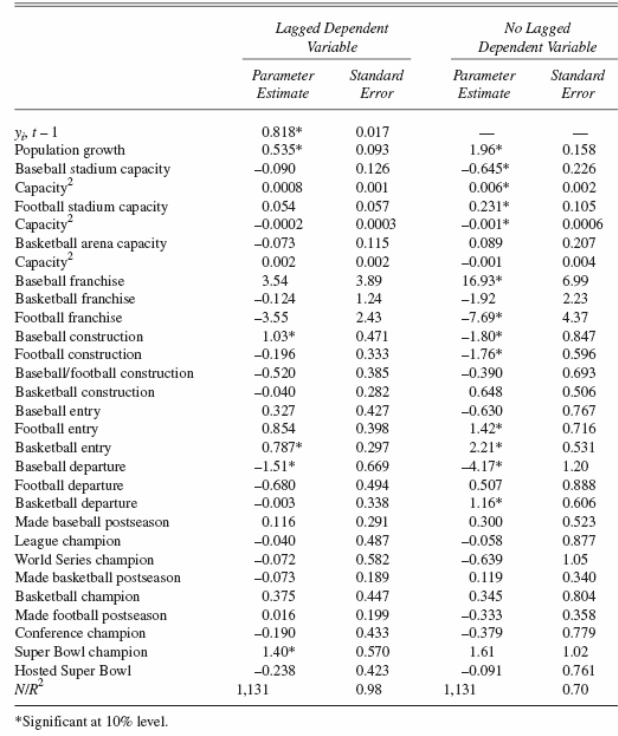
Such evidence clearly indicates that the Super Bowl poses visible economic leverages for neighboring regions of the winning team with some conditional errors and irregularities while the covering dependent variables superior ones. Another factor is the projective effectiveness of per capita earning through a rising labor capability in terms of championship sports organized in various stadiums. Thus, a continuous wining point will enhance such productivity followed by higher income and wages regardless the next year proposition.
Conversely, continuously succeeding in NBA will be resulted in a converse impact on total output and public funding since it is not feasible to make such million dollars investment for a short- term success will not support development of a new stadium. Eventually, professional sporting would be resulted into lower earning regarding some non- financial advantages. Therefore, if labor efficiency would communicate with professional games, the selection of stadium would make positive choice of organizations.
Conclusion: Regional per capital income determinants have closely related with professional sporting while economic leverage gained from such appearance would not be adequate in determining public expense of a stadium.
Article 180: Arenas versus multifunctional stadiums: Which Do Spectators Prefer?
Writer: Feddersen, A., & Maennig, W. (2008)
Introduction: Development of multifunctional stadiums is based on two distinctive reasons involving singular arenas natured by the off- presence of sporting events and multifunctional stadiums used for other cultural functions.
Purpose: Assessing the usability of multifunctional stadiums
Experimental methods: For analyzing multifunctional effects, panel analysis has conducted based on game- by- game seasonal data. Here, the use of regression equation can clarify the relationship among number of spectators for each season for a specific club and in specific season as:

Results: Multifunctional stadiums are greatly effective for organizing distinguished sporting and cultural moments including tracking and fielding competition, religious actions etc. It is argued that soccer fans love to enjoy a multipurpose atmosphere which requires new stadiums need to follow that format and older ones should be rebuilt into complete soccer grounds like- German professional soccer league, such as-
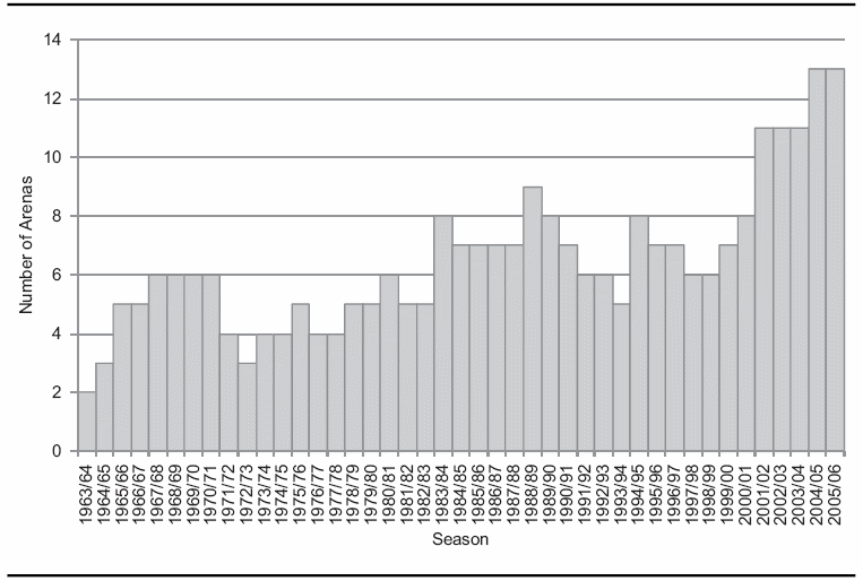
Being enlighten with such vision, a number of ancient European stadiums have modified for the previous 10 to 20 years. The revenue from additional audiences gives a major funding to the stadiums. Thus, the use of “Back of the Envelop”- measurement methodology, the “Arena Effect” of 2773 visitors contributes to 47141 extra visitors each season with 17 domestic sporting each season. It can estimate that within standard lifecycle of 30 years of a general stadium, earnings from ticket would raise by €16.81 by converting an extra yearly earning of €0.8 million at each season.
If a stadium’s lifetime value can estimate as 30 years, merely €24 million of extra revenue would generate from “Arena Effect”. This has related with 20% general funding in “World Cup 2006 stadium” amounting of €116750000, symbolizing a greater contribution of capital expenditures of sports stadiums through such effect.
Conclusion: So, environment of a stadium is far important than multiple amenities preferred by people for which many such stadiums have been rebuilt.
Article 124: Fan loyalty and stadium funding in professional baseball
Writer: Depken II, C.
Introduction: Re-examination of demand variable of baseball by delivering a fan loyalty measurement for US oriented professional baseball groups.
Purpose: Assessing whether professional sporting occasion related playground have contributed positive and negative impact on individual income.
Methodology: Fan loyalty was being estimated by stochastic frontier innovated by Aigner, Lovell and Schmidt (1977).
Results: In most often cases, sporting teams pose various demands and thus set different prices. Since most of the baseball, groups are domestic controllers, the intensity of fan loyalty should estimate in terms of statistical reviews of different cities. Therefore, it can be summarized that teams occupying lower intensity of fan devotion would lack success for generating public funding for new stadium establishment although it is not strictly related with the size of hosting town.
Therefore, there is a relationship between the quality of a team and degree of presence. Several variables regarding price of tickets, group success, degree of clutter and per capita income can used as inputs of this analysis. If a team wants to gain highest revenues, it would emphasize on intended rivalry while higher loyalty influences attendance of college football tournaments. Another measurement would be buying of merchandise on national or regional level by customers. The graphical exemplification of such relationship can be shown as:
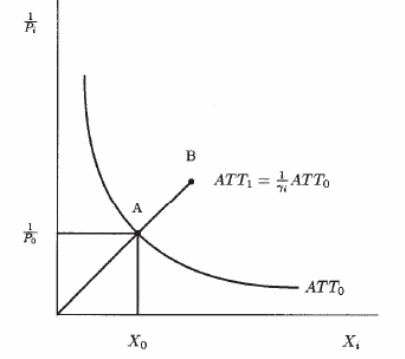
The demand frontier has gauged in terms of using panel of raw information of MLB from 1990 to 1996 by using the following equation:

In converted form:

Such analysis describes that the ticket charge is an average figure of original buying for estimating TR/ TA. The ticket charge is not individually responsible for increasing expenses rather than a combination of other factors including car parking, premiums, and transportation. Population estimation has based on selecting a sample statistics group indicated by local Census Bureau. Finally, time management has incorporated by dummy figures. Combining all those, formulated statistics would be as:
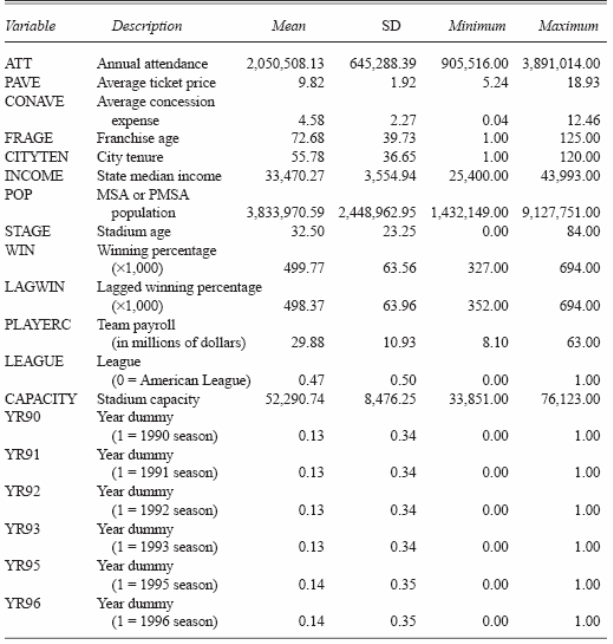

Therefore, optimum degree of loyalty is not a single catalyst for virtual presence with some disorders regarding team ineffectiveness but is conjunct with public- financing mottos.
Conclusion: Fans are usually present tournaments for both price- quality package and intangible degree of such loyalty.
Article 600: The value of public goods generated by a major league sports team
Writer: Johnson, B. K., Groothuis, P. A. & Whitehead, J. C. (2001).
Introduction: This study has explored that the stronger sporting teams can produce many final public commodities to their surroundings.
Purpose: Assessing the worth of public goods produced by commercial sporting group of National Hockey League
Experimental method: Survey is the simplest experimental technique that has conducted to gather information taking the special form of CVM questionnaire dispersed into five sections with different issues of professional sports behavior.
Results: The result of conducting a survey delivered a mixed attitude in this regard while such amount would not be adequate for justifying the necessity of engaging more funds in building stadiums. As previously been mentioned that sports and their venues are not significantly income gearing, such mega financing should not be promptly made for sporting purpose. Few warnings can place in this regard. Such as, although Pittsburg is the most famous hockey city, USA is experiencing the least popularity for the game while there is a chance of shifting the demand of hockey from other teams. Therefore, although this research has developed through various empirical findings, it is not a concrete feature of the overall community for some integral limitations.
Conclusion: So, the professional teams would not be bigger for justifying huge subsidies delivered to sporting arenas.
Article 168: Capital structure and team performance in professional baseball
Writer: O’Roark, J. B. (2001)
Introduction: Stadiums have used as initial principle by any team for showing their performance rather than other player contract with greater emphasize. As no sporting team had not been received relocation from 1971, the competitive movement of cities for attracting franchising and government funded stadiums are posing the relocation process under frightening point.
Purpose: Demonstration of impact of public possession of stadium’s negative impact on winning proposition.
Experimental method: The following has used:

Results: Here, a number of issues are being emphasized regardless the debate evolving an identification of political wheels, population size, socio- economic circumstances and depressing thoughts on ballot referendums. Increasingly, stadiums has constructed under government investment while team ownership tends to protect a newer one for keeping the team in towns by reserving the traditional branded capital to be developed within a specific region. At the same time, politicians can also contribute in assuring security from creating an overwhelming demand mixture.
In a questioning state of private- public ownership, some analysts argued that privately owned stadiums would utilized for long- run as Wrigley Field and Dodger stadium. Conversely, for prevailing below 30 years, blueprints of modifying public infrastructure have criticized. Other specialists have idealized that because of investing capital ingredients in lieu of owners, the utilization depreciation would be higher apart from ownership observation. In 1996, a crisis regarding sound formulation had noticed for some American stadiums in New York, Philadelphia, and Pittsburg, especially those have publicly owned.
Finally, absence of proper ownership may also be resulted in higher ticket price. All of those issues put emphasize on a stadium’s effectiveness in team success but transformation of expenditure is another factor, which makes the utilization purpose more complicated for players. Thus, specialists feel that there is no superior off for a team, which is liable for generating more and more confusion. Ultimately, it can optimize that teams will sophisticate their performance under private ownership rather than public ones where a linkage between success and presence would spread the monetary opportunities of limited market groups. Various capital structures of stadiums can be enlisted as:
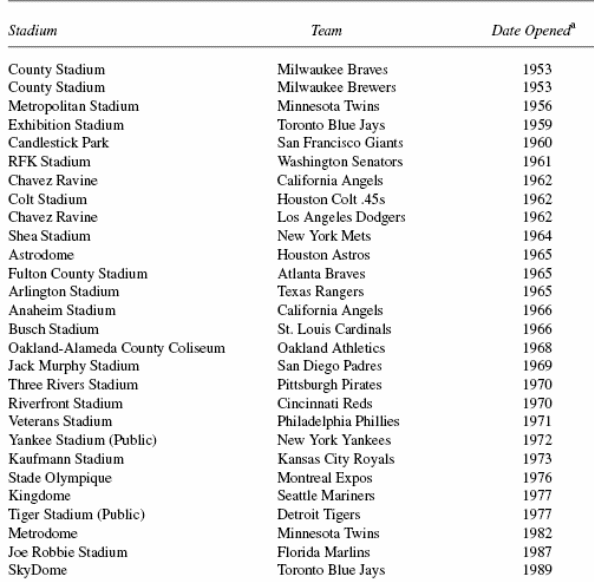
Conclusion: Since a city can be leveraged from extra revenues generated by stadiums, thus benefits should be a value of expense of a stadium that city.
Article 237: How long a honeymoon: The Effect of New Stadiums on Attendance in Major League Baseball
Writer: Clapp, C. M., & Hakes, J. K. (2005).
Introduction: According to a research work by Clapp and Hakes, 2005, a panel data had been used to measure the “honeymoon” impact of new playgrounds goes forward a qualitative analysis in terms of raising crowd by 32% to 37% at the starting year ranging from 1950 to 2002. Such presence only tends to gear up from sustaining levels for multifunctional stadiums twice in a year from 1960 to 1974 while 6 to 10 times for a latest ballparks.
Purpose: Assessing the “honeymoon” impact of a new stadium
Experimental method: Use of demand model for assessing baseball perspective as, Q = Q (p, z) which involves all ingredients contributing individual’s decision in attending baseball game. Here, a panel of database containing year ending statistics of baseball franchises from 1950 to 2002 had been used by implementing β, λ and γ for constructing the model in order to idealize stadium and franchise impact as below:

Results: Opposite to projected anticipation, there exists no constructive relationship between new stadiums and group performance in terms of presence or stadium profits, which indicates that a profitable group- proprietor would be reluctant of using a new venue of profit generation flow for enhancing the quality performance in sporting. Great American Ballpark is an example that can mentioned in this case. It has started in 2003 with a predicted expenditure of $297 million and endorsement of half- cent- per- dollar selling tax enhancement by local voters. So, the attendance influence can be displayed as:
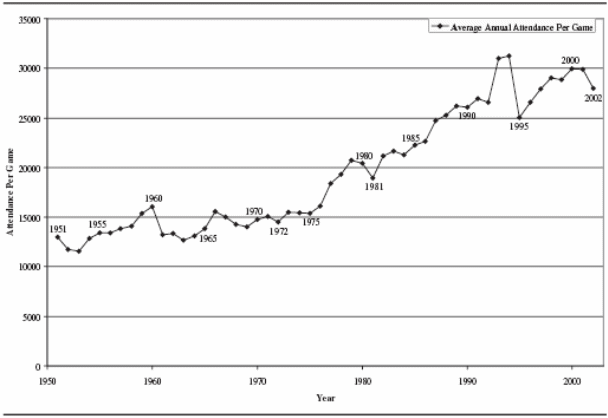
Implementation if various measurement procedures of playground honeymoon, it can be pointed out that the age of considering stadiums would have positive relationship which lessen the importance ballpark times by illustrating a lower influence of honeymoon period. Such impact can shown as:

This diagram is helpful to have certain understanding regarding the level of projected presence followed by consequent years, which clarifies the team wining possibility over profit margin of targeted stadium. On the other hand, the significance of balancing demand for single- field achievement and ballparks can visualize as:
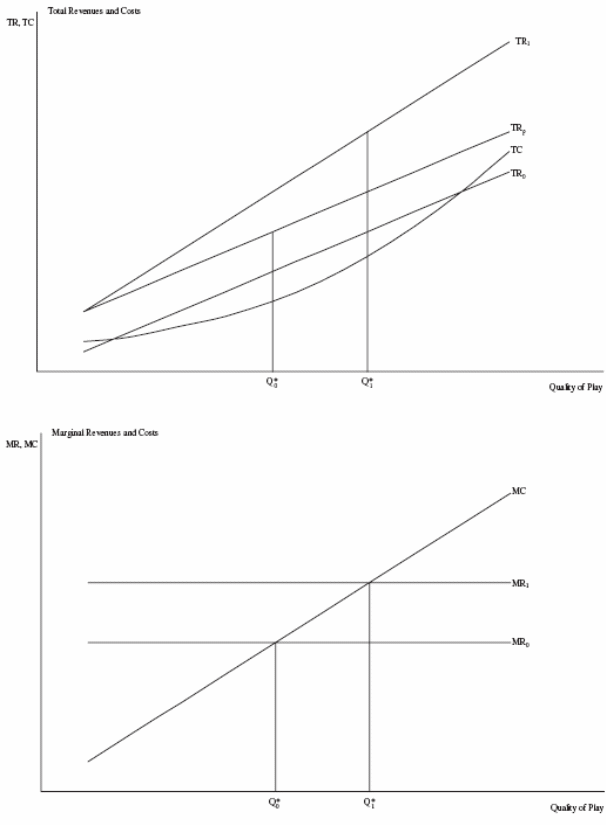
Although the analysis provides an inconsistent relationship between the noted variables, eventually, a new stadium would attract more crowds for both the tournament and enjoyment of internal amenities. Such factor would offer franchise proprietorship with upward revenues. Thus, an amortization of new stadium development or renovation over a long- run loan or bon would generate more cash flows that are positive, more incomes, and lower debt conditions.
Conclusion: The honeymoon effect contains an assessment of MLB attendance for a certain period to determine the role of a new stadium on playing performance. Such discussion also reveals the fact of stadium’s contribution in enhancing the overall quality of a tournament.
Article 124: Impact of stadium announcements on residential property values: Evidence from a natural experiment in Dallas- Fort Worth
Writer: Dehring, C. A., Depken, C. A. & Ward, M. R. (2006).
Introduction: To analyze the empirical evidence between these two factors, a study has conduced by considering National Football League’s Dallas Cowboy and surrounding area.
Purpose: Understanding the announcements of sporting arenas on housing assets.
Experimental method: For testing the declaration of stadiums on residential assets, pricing models, event study mechanism and difference- in- difference evaluators have been used while the 1st one was estimated by age, size, quality, parking, timing etc. variables and 2nd one for estimating core county versus regional comparison. Here, Dallas has used as Dummy County upon which the calculating equation is:
Results: It has found out that such property values have raised through an announcement of a local stadium. However, a negative trend had observed in Arlington and Texas with a 1.5% reduction recorded before actual commends. This figure is merely equal to the projected sales tax, which notifies the necessity of impact of average optimum facility of hosting the Arlington Cowboys’ less significance. So far, the project requires more investigation of altering codes to make efficient decision in Florida.
Conclusion: As the project has faced controversial effects, the entire issue should be analyzed more to reach at an exact decision.
Article 361: A note on the local economic impact of sports expenditures
Writer: Siegfried, J. & Zimbalist, A. (2002).
Introduction: Sporting expenses are topic of exclusive buyer substitution far from domestic expenses while they have to suffer from illegal leakages from local economy because of the tendency of players to export their income to the domestic of their stable housing.
Purpose: Assessment of a standard domestic economic influence multiplier embellishes the simulative impact of playgrounds by more than 400%.
Experimental method: Population study of specific zones along with public cost model to estimate the amount of total public subsidy for all sorts of sporting infrastructures with essential adjustments regarding public development cost, yearly public cost and other revenue with expenditure and inescapable tax revenues. Additionally, entire study has conducted by use of relevant multiplier. Time- series and cross- sectional analysis have also used to reach at a result.
Results: As governments fix a handsome budget for sports financing in stead direct funding, such investment should generate indirect returns to society for economic progress. Thus, evolvement into a new area would be ineffective with higher local expenses by leading a “beggar- my- neighbor” procedure by satisfying home politics are not for certain economists and there are 5% to 20% outsiders that would result as a greater leakages and more local income. The subsidization programs of sporting have sometimes conducted for boosting domestic economy determined by multiplier effect, consumer substitution, and potential leakages.
Conclusion: The overall discussion has discovered no significant influence of local expenditures on commercial sporting groups while huge punctures of sporting benefits never in recirculation of such economy.
Article 581: A stadium by any other name: The Value of Naming Rights
Writer: Leeds, M. E., Leeds, M. A. & Pistolet, I. (2007).
Introduction: Naming issue is concerned with a proof of less emphasize of naming on stadium profitability.
Purpose: Assessment of stadium naming.
Experimental method: Event- study analysis had been conducted to determine the consequence of exogenous occurrence on a single or group of organizational context involving identification of questioning issues, data collection and frequency mechanism and fundamental regression equation as:

Results: In search of an illustration of buying naming rights for company valuation, less positive impact has found out among 108 consequences, 54 had a fixed, 13 had 10% and 7 had 5% significance level while the sample companies were formal brick- and- mortar ones containing the following naming rights structure:
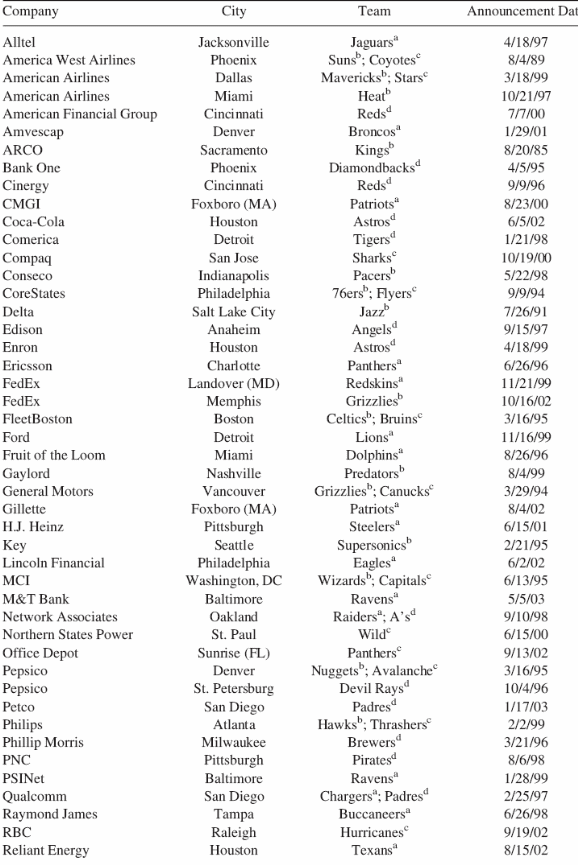

Such outcome has also incorporated with abnormal returns of 0.18% by introducing some other related factors:
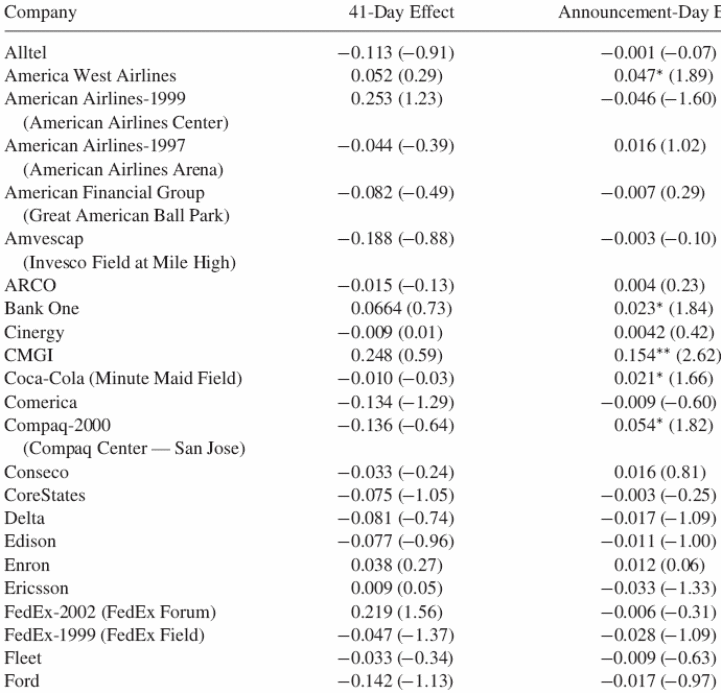
While organizations declare of purchasing naming rights of sports clubs, it has explained as a knowledge investment with an inherent trust of visibility and profits. Therefore, making such deal is more beneficial to get financial return.
Conclusion: From 1990, commercial sporting groups have sold their naming obligation to gain personal benefits to private organizations. Although this is a controversial fact to many, it generally turns no enduring impact of revenues to the buying firms.
Article 183: The stadium game: Cities Versus Teams
Writer: Owen, J. G. (2003).
Introduction: The invisible fame of sporting groups cannot be overtaken by ticket selling and other financial profits. Therefore, the city size is an important variable here regarding subsidization program of government.
Purpose: Showing the profitability of cities without team subsidy setting upon the social value of that team
Experimental method: Contingent analysis of model based of mathematical equations.
Results: Team organizers try to enhance profits on degree of talents with a primary step of ticket charges. So the revenue function could expressed as:
Possibility involves an effective team performance better than others because of uncertainty of attendance do while higher talents would have lower or negative margin. However, problems may occur for containing bad groups and unequally matched plays for which tiny markets are imbalanced in terms of more looses while larger ones are enjoying that uncertainty at a beneficial temperament of wining. Government subsidies can act as resource allocation for a stadium, which makes it more expensive. If it assumes that such costs will be constant, it will not affix or improve the team performance. At the same time, barriers in stadium capability will be no significance. So, group wise profit enhancement problem is:
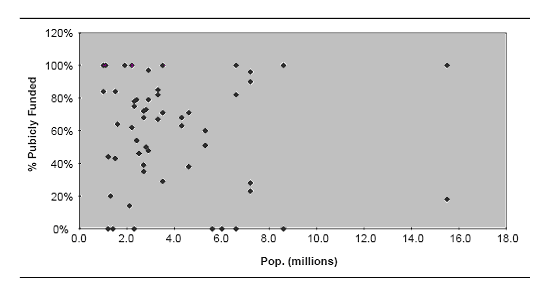
Subsidies would increase social value but alternative condition may also evolve in terms of different cities mostly clarified by free entrance of groups into leagues causing increased competition (Owen 2003). As noted earlier, formal revenue generation closely related with selling of tickets with a special concentration on leasing agreements with “gross ticket sales” erased or non- erased taxes along with group and league’s part leading a greater difference between actual and obtained revenues for stadiums. Concession income involves per capita earning from food and beverage availability in the stadium. Diversification should also consider in calculating revenue that is mostly observe for multi- purpose stadiums. Here, sporting tournaments enlist high school and college football, cricket, volleyball etc. while non- sporting usages are public meetings, fireworks and other public functions counting a major portion of projected revenue.
Today, maximum modern stadiums have developed for stadium club focusing local, national, and international community leaders, emphasizing greater assistance and attracting more clutter in association of various technological amenities (Badde 1994)

Conclusion: The stadium game focuses on model development for showing invisible benefits of stadiums contrasting a position of larger and smaller cities. Here, government is one of the major sources that make huge investment not only for public welfare infrastructure but also for amusement stadiums incurring a greater amount of public expenditure.
Article: Revenue generation from PSL and stadium authority: disposition of revenues from permanent seat license (PSLs)
Writer: Curran, J & McDonald, R. (2002)
Introduction: According to Esquire, 2002, permanent seat license is being used for accumulating finance in order to assist the establishment of new and renovated stadiums while the range of ticket of Baltimore football stadium is $500 to $5000.
Purpose: Legality and process view of PSL.
Experimental method: Empirical data and findings
Results: Imposition of several laws regarding PSL revenues, a team of legislative auditors would verify a report of the team’s expenses about PLS selling while the current forecasting of Stadium Authority has questioned by such auditing for lessening PLS revenues under certain legislation- 1995. Memorandum of Agreement and the Legislation of 1996 are two most relevant tools of law that have generally used to evaluate the charges paid to Stadium Authority for designing, developing and improving stadiums and forgoing spending fees. After estimating an average amount needs to accomplish the stadium construction costs, the team is required to spend PSL in lawful and restricted ways.
Conclusion: So, several laws and regulations are highly visible in sporting industries, which need to be appropriately implemented in stadium issues.
Article: The economic effects of sports stadiums and franchises direct relationship between economic growth and sports stadiums
Writer: Castronova, J. (2007).
Introduction: This part of the study will show how the sporting stadiums would integrate with economic development and growth factor.
Purpose: Assessing the economic effect of professional sporting stadiums and teams.
Experimental method: To understand the impact of sporting earnings on local economy, employment level has emphasized to develop FAJOBS model as:
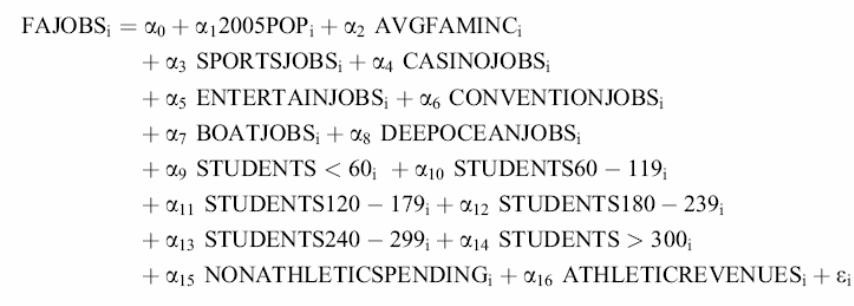
Result: At a precise level, three economic theories can prove relative negativity of this issue in terms of substitution impact, outflows and reverse impact of domestic public budget. The first one introduced from the limited entertainment amount of people. Since they tend to put money here apart from other sectors, the net impact is zero and the single pave to improve it to attract new money through sporting franchise for example, the case of Boston Red Sox against Fenway Park.
For leakages, stadiums often can not pass redevelopment tactics as MLB, NBA and NFL pay 50% salary to players and 40% to owners while less emphasize on stadium investment purpose. Finally, harmonizing with previous studies, stadiums pose a reverse impact on home budgets of government with net negative operating revenue. Such evidence can find out by studying 25 stadiums from 1978 to 1992 with $7 million loss.
Conclusion: Specific economic review incorporates an explanation of stadium effectiveness for both owners and boosters while at different parts of the entire study has shown economic feasibility, community perception and future modulation of sporting stadium contribution.
Article 628: Assessing the economic impact of college football games on local economies
Writer: Baade, R. A. Baumann, R. W. & Matheson, V. A. (2008)
Introduction: This fact will find out no statistical importance of college football games on hosting county’s economy incorporating the strategic vision of metropolitan areas and others.
Purpose: Assessing the economic influence of public sports on domestic economies
Experimental method: Two basic models have been uses as below:
Results: The construction and environmental effectiveness incorporate taking part of taxing groups through subsidization while it is essential of outstanding level of market backings that the domestic population would serve. Seattle can be mentioned as projected example where the level of present contractual mobility, possibility of emerging two to more football teams within 5 years and adequate expansion mode of baseball teams have made the place suitable to attract a huge number of spectators to the local stadiums. As we know that net income of a stadium depends on degree of attendance, such degree should measured by estimated population and individual income, image of team and social interest.
For maximum West Coastal sporting markets, the stadium revenue is higher for greater intensity of those factors. Here, newer and older ones are affluent enough to incur larger portion of per capita income while football is scoring the top item to generate revenue. From macroeconomic viewpoint, stadium is the source of employing numerous part and full- time employees. It would also engage local sporting suppliers and utility providers in the regular value generating process. Such impact can also shown by maintaining export/ import balance not only for USA but also for the entire world.
Through an assistance of various media vehicles including radio and television, stadiums can improve purchasing power parity and aggregate demand both at internal and external level. In addition, other activities involving boating, hunting, hiking, jumping, skiing, or even musical concerts could accomplished in a larger stadium although it is argued a lot. Many stadiums in the world are getting attention for long- run recreational benefits of people while those are not always effective for facilitating the major league’s participation (Badde, Baumann & Matheson 2008).
Conclusion: Finally, it concluded that any step to discern the impact of sports within large, diversified metropolitan areas could compared to probing for a needle in a haystack.
Reference
Becht, J. W. (2004). ST. Louis’ Old Olympic Stadium A Photo Essay. Web.
Baade, R. A. (1994). Stadiums, Professional Sports, and Economic Development Assessing the Reality. Web.
Baade, R. A. Baumann, R. W. & Matheson, V. A. (2008) Economies Assessing the Economic Impact of College Football Games on Local. Journal of Sports Economics. Web.
Castronova, J. (2007). The Economic Effects of Sports Stadiums and Franchises. Web.
Clapp, C. M., & Hakes, J. K. (2005) How Long a Honeymoon? The Effect of New Stadiums on Attendance in Major League Baseball. Journal of Sports Economics.
Coates, D. & Humphreys, B.R (1999) The Economic Impact of Postseason Play in Professional Sports. Journal of Sports Economics.
Coates, D. & Humphreys, B. R. (1999) The Stadium Gambit and Local Economic Development. Economic Development Policy. Volume 23, No. 2. Web.
Curran, J & McDonald, R. (2002). Disposition Of Revenues From Permanent Seat Licenses (PSLS). Web.
Dehring, C. A., Depken, C. A. & Ward, M. R. (2006) The Impact of Stadium Announcements on Residential Property Values: Evidence from a Natural Experiment in Dallas-Fort Worth. Working Paper Series, Paper No. 06-16.
Depken, C. A. (2000) Fan Loyalty and Stadium Funding in Professional Baseball. Journal of Sports Economics. Web.
Ehrnwald, K. (1999). A Little Stadium Can Affect a Community. Web.
Feddersen, A., & Maennig, W. (2008) Arenas Versus Multifunctional Stadiums: Which Do Spectators Prefer? Journal of Sports Economics. Web.
Gold, M. (2004). Fairfax to Study Effects of a Baseball Stadium. Web.
Hollis, S. (2008). Stadium Naming Rights – A Quick Tour. Web.
Holmes, G. (2007). New Stadium Technology. Web.
Johnson, B. K., Groothuis, P. A. & Whitehead, J. C. (2001) The Value of Public Goods Generated by a Major League Sports Team: The CVM Approach. Journal of Sports Economics.
John Siegfried, J. & Zimbalist, A. (2002) A Note on the Local Economic Impact of Sports Expenditures. Journal of Sports Economics.
Lacancha (1999) FIFA Affirms Plans For Stadiums In Korea And Japan. Web.
Leeds, M.E., Leeds, M. A. & Pistolet, I. (2007) A Stadium by Any Other Name: The Value of Naming Rights. Journal of Sports Economics.
Marty, J. S. (2009). A New Vikings Stadium? L.A. Shows Us How. Web.
Major Projects (2009) Melbourne Rectangular Stadium. Web.
McAuliffe, G. L. (2002). Waking up the neighbours Bring on the stadium noise – but quietly. Web.
O’Roark, J. B. (2001) Capital Structure and Team Performance in Professional Baseball. Journal of Sports Economics.
Owen, J.G. (2003) The Stadium Game: Cities Versus Teams. Journal of Sports Economics.
Platten, A. (2007) Building the stadium of the future —from the foundation to the applications. Web.
PTC (2008). Uni-Systems Scores Big in Designing Retractable Stadium Roofs Using Mathcad. Web.
Qwest Field (2008) Venue Information. Web.
Rivero, J. (2003). Coney Island’s Redevelopment (Part 1): The Stadium. Web.
RJS (1995). Knauf saves time, energy at RAYMOND JAMES STADIUM. Web.
Ross, S. F. (2009) Competition Law as a Constraint on Monopolistic Exploitation by Sports Leagues and Clubs. Oxford Review of Economic Policy. Vol. 19, No. 4.
Sanchez, D. (1997) Professional Sports, and Business Stadiums generate revenue in several important ways. Web.
South-Western College Publishing (2008) Policy Debate: Does Public Investment in Municipal Sports Stadiums Pay Off?
Top10land (2007) Top Ten Biggest Sports Stadiums in the World. Web.
Trumpbour, R. C. (2007). Rituals, Invented Traditions, and Shifting Power: The Role of Communication in the History of Stadium Construction. Web.
Warren, P. (2007) Case Study: Integrated Building Management. Web.
WMC. (1966). Economic feasibility of a multipurpose stadium for king county and seattle, Washington.Web.
World Stadiums. (2009) Future Stadiums (113). Web.